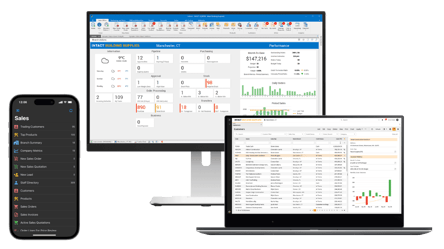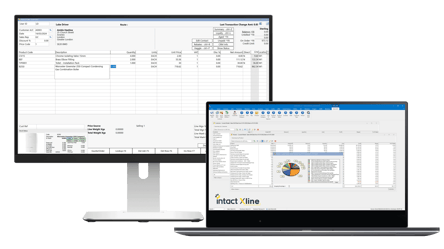For those deciding to upgrade their current business management software or preparing to invest in an ERP system there can be a lot of unknowns from the outset.
The questions we get asked from clients regarding new software implementation are nearly always ‘time related’. Here are a couple of examples:
- How long does it take to implement new business management software or ERP system?
- When is the best time to implement it?
- How much time will we need to allocate for a successful deployment?
Drawing on over 26 years of implementing new software across many different sectors, we will try to answer some of those questions.
How long does it take?
How long is a piece of string? I know that is a dreadful analogy but unfortunately it is difficult to define.
For the purpose of providing something that would resemble a useful answer, I will consider a 10 user business buying a Tier 2 solution to replace an out of date software package.
At minimum, you should allow 6 to 8 weeks from date of order (signed order with deposit) to go-live.
To accomplish a 2 month lead time, all parties need to have the necessary resources available on demand and have a clearly defined project scope to achieve.
You should allow for the 4 – 6 week period following the ‘go-live’ of the sales ledger for tidying up loose ends.
This time also allows for the completion of a first month end along with the development and commissioning of the necessary reports and procedures.
More typically, companies tend to allow for 3-4 months from date of order to go-live. Given that the process of evaluating and choosing a system can take several months, a company should take all this into consideration when putting timescales around a project like this.
When is the best time to do it?
There is no ideal time for undertaking a project like this but I would suggest taking the following into consideration when choosing the ‘when’ for your project:
- Most companies favour a ‘financial year end’ as this makes a clear break which is fully auditable with opening balances provided by the accountant
- At the bare minimum, a ‘month end’ should be chosen so that the audit trail is maintained by the common month end reports on Debtors, Creditors, Trial Balance etc.
- The availability of resources to do data cleansing, training, user acceptance testing etc can play a major part in choosing when to go-live on a new system. Holiday periods, Christmas etc must all be taken into consideration to ensure that the key people involved are free to take part in the project.
- Companies should also take seasonal considerations into account when deciding on a go-live date. Most businesses have busy periods where they do not need the distraction of a system change on the agenda when they should be putting resources into sales.
How much of your time will it take?
From the outset, you will need to decide on what you ‘expect’ from the new system. Is the new system going to drive a change in processes, achieve efficiencies or simply replace an out of date accounts system. Many companies avail of the opportunity to review their existing processes and consider their long term strategies in conjunction with a change in system.
All of these tasks will add to the personal workload during the project. A common mistake is where the business owner makes the assumption that signing the sales order for a new system is the extent of his / her responsibilities within the project. There are many areas where owners, senior management and key staff have to get involved including:
- Data preparation
- Form and report verification
- User acceptance Testing
- Train the trainer
- Project meetings
- Strategy development
How easily will my staff adapt to the new system?
This is another commonly asked time related question. We believe if you fail to plan, plan to fail. Another tired anecdote but it is so true. The level of planning that goes in to the roll-out of a new system is directly proportional to its success.
Like getting a new phone, the first few days are spent trying to do things the way the old phone did it but after a couple of weeks, you could not imagine going back to the old one.
Most modern systems are reasonably intuitive and this should be checked out in advance by consulting with a few reference sites to gauge their experience.
Worth A Read: ERP – A Total Business Management System





